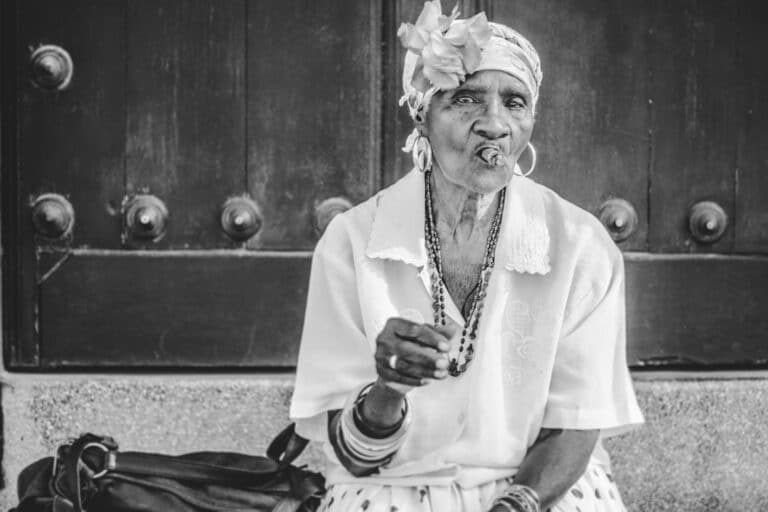The Story of the Cigar Band
Cigar bands have a rich and fascinating history that dates back to the 19th century. Initially, these decorative pieces of paper were introduced as a means to identify the brand and origin of cigars. In the early days, cigars were often sold without any branding, making it difficult for consumers to distinguish between different products.
As the cigar industry began to flourish, particularly in Cuba, manufacturers recognized the need for a more effective way to market their products. Thus, the cigar band was born, serving not only as a label but also as a symbol of quality and craftsmanship. As you delve deeper into the history of cigar bands, you will discover that they were not merely functional; they also reflected the artistry and culture of their time.
Many bands featured intricate designs, vibrant colors, and even gold leaf embellishments, showcasing the skill of the artisans who created them. This artistic flair was not just for show; it played a crucial role in attracting customers and establishing brand loyalty. Over the years, cigar bands evolved from simple labels into elaborate works of art, each telling a story about the brand and its heritage.
Key Takeaways
- Cigar bands were first used in the 19th century to distinguish between different cigar brands and prevent counterfeiting.
- The primary purpose of cigar bands is to protect the delicate wrapper leaf and to convey information about the cigar brand and blend.
- Cigar bands have evolved from simple paper bands to elaborate, decorative designs that reflect the brand’s image and appeal to consumers.
- The design of cigar bands is crucial in creating brand recognition and differentiation in a competitive market.
- Cigar bands play a significant role in branding, helping to establish a brand’s identity and communicate its values to consumers.
The Purpose of Cigar Bands
The primary purpose of cigar bands is to provide essential information about the cigar itself. They typically display the brand name, the manufacturer, and sometimes even the specific blend or line of cigars. This information is vital for consumers who wish to make informed choices about their purchases.
When you pick up a cigar, the band serves as your first point of contact with the brand, offering insights into its identity and reputation. Beyond mere identification, cigar bands also serve a practical purpose. They help to keep the wrapper leaf intact and prevent it from unraveling while you smoke.
This is particularly important for premium cigars, where the quality of the wrapper can significantly impact the overall smoking experience. By holding the wrapper in place, cigar bands ensure that you can enjoy your cigar without any interruptions or distractions. Thus, they play a dual role: providing information while also enhancing the functionality of the product.
The Evolution of Cigar Bands

As you explore the evolution of cigar bands, you will notice that they have undergone significant changes over the decades. In the early days, bands were relatively simple and utilitarian, often featuring basic text with little embellishment. However, as competition in the cigar market intensified, manufacturers began to invest more in their branding efforts.
This led to an explosion of creativity in band design during the late 19th and early 20th centuries. The introduction of lithography revolutionized the production of cigar bands, allowing for more intricate designs and vibrant colors. You might find it fascinating that some bands from this era featured elaborate illustrations, including depictions of historical figures, exotic landscapes, and even whimsical characters.
This artistic evolution not only made cigar bands more visually appealing but also transformed them into collectible items in their own right. As you examine various bands from different periods, you can trace the changing tastes and trends in design that reflect broader cultural shifts.
The Design of Cigar Bands
When it comes to the design of cigar bands, there is an undeniable artistry involved that captivates both smokers and collectors alike. Each band is a canvas for creativity, often incorporating elements such as logos, typography, and color schemes that resonate with the brand’s identity. As you study different cigar bands, you may notice how some brands opt for a classic look with elegant fonts and muted colors, while others embrace bold graphics and vibrant hues to stand out on store shelves.
The design process is not merely about aesthetics; it also involves strategic considerations. A well-designed band can evoke emotions and create a sense of connection with consumers. For instance, a band that features traditional motifs may appeal to those who appreciate heritage and craftsmanship, while a modern design might attract younger smokers looking for something fresh and innovative.
As you explore various designs, consider how they reflect not only individual brand identities but also broader trends in consumer preferences.
The Role of Cigar Bands in Branding
Cigar bands play a pivotal role in branding within the cigar industry. They serve as a visual representation of a brand’s values and mission, helping to establish an emotional connection with consumers. When you see a familiar band on a cigar, it can evoke memories of past experiences or convey a sense of trust in the quality of the product.
This connection is crucial in an industry where brand loyalty can significantly influence purchasing decisions. Moreover, cigar bands are often used as marketing tools to differentiate products within a crowded marketplace. With countless brands vying for attention, a distinctive band can make all the difference in capturing a consumer’s interest.
As you navigate through various cigar offerings, pay attention to how different brands utilize their bands to communicate their unique selling propositions. Whether it’s through innovative designs or clever taglines, these bands are essential in shaping consumer perceptions and driving sales.
The Collectibility of Cigar Bands

The Artistic and Historical Significance
For many enthusiasts, cigar bands transcend their functional purpose and become objects of fascination and collectibility. The allure of collecting cigar bands lies in their historical significance and artistic value.
Exploring Themes and Eras
As you delve into this hobby, you may find yourself drawn to specific themes or eras that resonate with your personal interests. Some collectors focus on vintage bands from renowned brands, while others seek out limited editions or unique designs that tell a story.
A Community of Enthusiasts
The world of cigar band collecting is vibrant and diverse, with enthusiasts often sharing their collections through online forums or social media platforms. You might find it intriguing how collectors engage in trading or showcasing their prized finds at events or conventions dedicated to cigars. This sense of community adds another layer to the experience, allowing you to connect with fellow aficionados who share your passion for these small yet significant pieces of art.
The Impact of Cigar Bands on the Cigar Industry
Cigar bands have had a profound impact on the cigar industry as a whole. They have not only facilitated branding and marketing efforts but have also contributed to the overall perception of cigars as luxury items. When you see an elegantly designed band on a premium cigar, it elevates your expectations regarding quality and craftsmanship.
This perception can influence consumer behavior and drive demand for specific brands or lines. Additionally, cigar bands have played a role in shaping industry trends over time. As you observe changes in design and branding strategies, you may notice how they reflect broader shifts in consumer preferences and market dynamics.
For instance, the rise of artisanal and boutique cigars has led to an increase in unique band designs that emphasize individuality and craftsmanship. This evolution highlights how cigar bands are not just decorative elements; they are integral to understanding the industry’s trajectory.
The Future of Cigar Bands
Looking ahead, the future of cigar bands appears promising yet challenging in an ever-evolving market landscape. As consumer preferences shift towards sustainability and eco-friendliness, manufacturers may need to adapt their band materials and production processes accordingly. You might find it interesting how some brands are already exploring biodegradable or recyclable options for their bands to align with these values.
Moreover, advancements in technology could further influence the design and production of cigar bands. Digital printing techniques may allow for even more intricate designs at lower costs, enabling brands to experiment with new aesthetics without sacrificing quality. As you consider these possibilities, think about how innovation could reshape not only the appearance of cigar bands but also their role within the broader context of branding and marketing in the cigar industry.
In conclusion, cigar bands are much more than mere labels; they are rich artifacts that encapsulate history, artistry, branding strategies, and consumer culture within the cigar industry. As you explore this fascinating world further, you will undoubtedly appreciate the intricate relationship between these small pieces of paper and the larger narrative they represent in your smoking experience.
If you enjoyed reading about The Story of the Cigar Band, you may also be interested in learning more about the different types of cigars available for purchase. Check out this article on The Humidor Depot website to explore their selection of premium cigars and find the perfect one to pair with your favorite cigar band.
FAQs
What is a cigar band?
A cigar band is a small strip of paper or foil that is wrapped around the body of a cigar to secure the wrapper leaf in place and to provide branding and information about the cigar.
What is the purpose of a cigar band?
The primary purpose of a cigar band is to hold the wrapper leaf in place and to prevent it from unraveling. Additionally, cigar bands serve as a branding and marketing tool for cigar manufacturers, providing information about the cigar’s brand, origin, and blend.
When did cigar bands first appear?
Cigar bands first appeared in the early 19th century as a way for cigar manufacturers to distinguish their products from those of their competitors. The use of cigar bands became more widespread in the late 1800s with the advent of lithography and the ability to print intricate designs and logos on the bands.
What are the different types of cigar bands?
There are several types of cigar bands, including traditional paper bands, embossed bands, foil bands, and die-cut bands. Each type of band offers a unique look and feel, and cigar manufacturers often choose bands that reflect the style and branding of their cigars.
Are cigar bands collectible?
Yes, cigar bands are often collected by enthusiasts and hobbyists. Some collectors focus on specific brands or time periods, while others seek out rare or unusual bands. Collecting cigar bands can be a fun and rewarding hobby for those interested in the history and artistry of cigar packaging.






